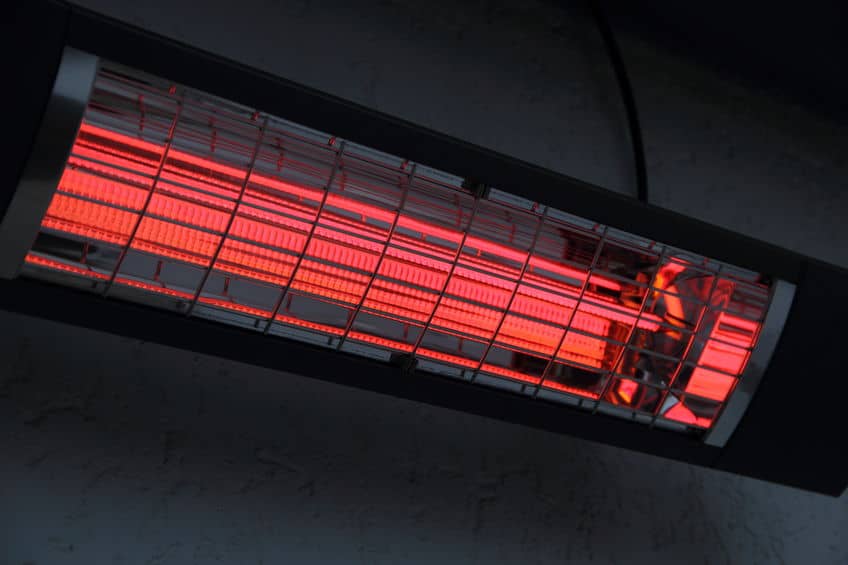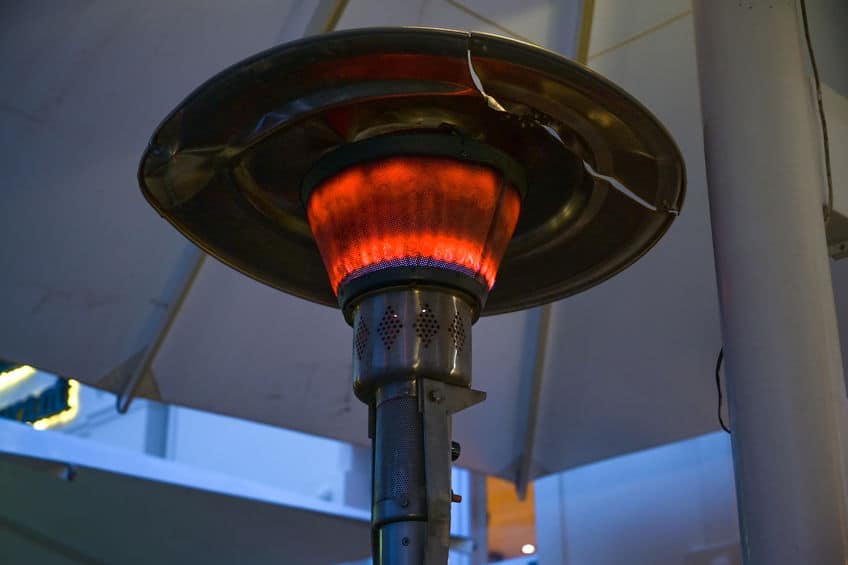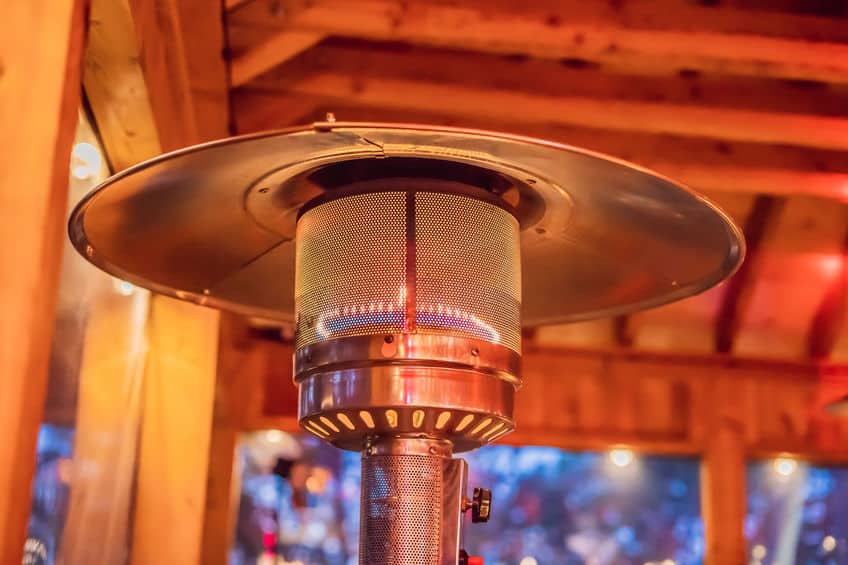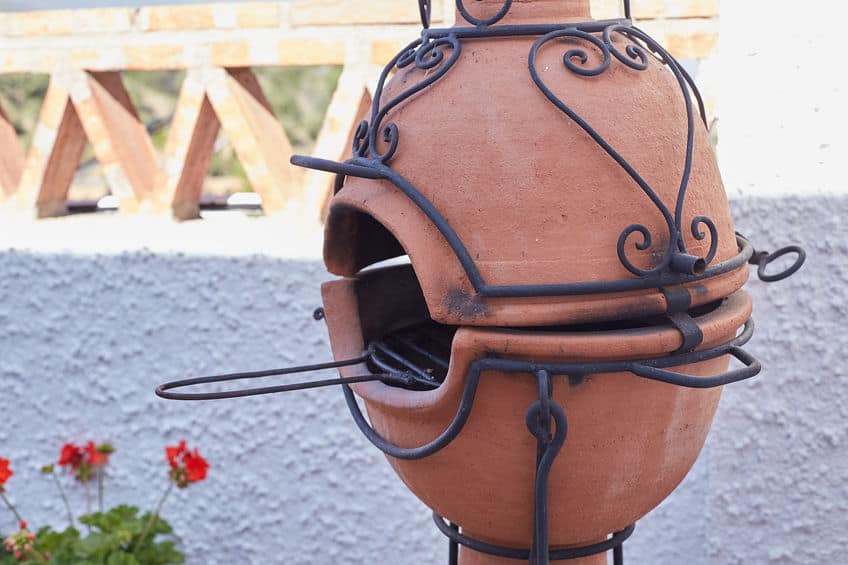A patio heater can help extend your patio season significantly, providing comfortable outdoor seating well into the colder fall and winter months.
These heaters are appealing to homeowners and restaurant owners alike, who want to have a usable outdoor space for as long as possible!
With the introduction of new infrared technology, patio heaters have become more efficient and safer to use.
However, many potential users still worry about the safety of using patio heaters in their covered or screened-in porches.
Can patio heaters be safely used in screened-in porches? The quick answer is yes! Patio heaters can be used under covered and screened-in porches, as long as the manufacturer’s recommendations are followed and safety measures are taken.
Various aspects need to be taken into consideration when selecting the right kind of patio heater for your space.
In this article, we explore the different options for patio heaters and provide helpful safety tips for heater use in screened-in porches.
Types of patio heaters
Not all patio heaters are created equal! Especially when discussing their safety within an enclosed space, some are better than others.
There are four main types of patio heaters, listed here from safest to least safe to use in enclosed spaces.
Electric:

One of the most common types of patio heater is the electric heater. It is super easy to use and can be placed anywhere as long as there is access to an electric outlet.
Electric heaters are considered the safest to use under covered and screened-in patios. They use infrared heat technology to evenly distributed heat, without open flames, or sparks.
In general, their clearance requirements are much less than propane and natural gas heaters, although minimum clearance and circulation requirements still need to be considered and respected.
As they can end up using larger amounts of electricity, these heaters can be more costly long-term.
They are also less powerful than propane and gas alternatives, so consider your heating requirements before making a purchase.
Wall-mounted, large stand-alone and small portable heater options are available, making finding the right heater for your space easy!
Natural Gas:

Although inexpensive to run, a natural gas heater requires access to a natural gas line and is permanently installed in place. These units are often wall-mounted and are suitable for covered and screened-in areas.
Unfortunately, their installation can be costly and many homes are not equipped with natural gas lines that are easily accessible, so this may not be an option for all.
However, it is the optimal choice for many business and commercial spaces.
Traditional wall-mounted units are aesthetically pleasing as they blend well with their background, and the use of infrared heat technology means they can be installed in close proximity to roofs or ceilings.
Propane:

Propane heaters are the most common patio heaters. They are easy to use, relatively inexpensive, heat up very fast, and distribute heat evenly.
Most propane heaters are easily portable, although their size can be a limiting factor.
Unfortunately, the main disadvantages of propane heaters are their requirements for substantial overhead clearance and the need for extra ventilation.
This makes them more dangerous for use in a screened-in patio as more precautions need to be taken. Never leave a propane heater in a screened-in patio unattended!
Common types of propane heaters include the iconic mushroom heater, gas fire pits, and table-top units.
Propane heaters will need propane tank replacements, although the frequency of replacement will depend on the size of the propane tank and usage of the heater.
Wood burning:

Wood-burning heaters are the cheapest to purchase, and are cheap to run. They provide good amounts of heat, however, their main downside is the open flame and excess smoke that are released.
Particularly in covered and enclosed spaces, the excess smoke may create problems.
Not only will it be uncomfortable for people to inhale the smoke, but stains and damage can occur.
The exposure to open flames when using wood-burning heaters also makes them more dangerous, particularly for use around children and pets.
It is inadvisable to use wood-burning heaters in screened-in porches.
Other factors to consider when choosing a patio heater for your screened-in porch
In addition to the type of energy source your patio heater uses, consider the adjustability and heating capabilities when choosing a patio heater for your screened-in porch.
Adjustability:
Consider whether the heater you selected can be adjusted such that the heat is directed to the location where it is needed.
Adjustable heaters allow for targeted heating and lead to less heat loss.
Heating capability:
The amount of heat provided by propane or natural gas heaters is usually measured in BTUs (British Thermal Units), while the amount of heat produced by an electric heater is calculated in watts.
Consider the size, layout, and desired temperature you want your patio to reach when selecting your heater.
Use the following formula when calculating the BTUs necessary to heat your space:
Patio size (in square feet) x (desired temperature in Fahrenheit – outside temperature in Fahrenheit) = BTUs required.
So, if you have a 15 x 18-foot patio, an ambient temperature of 45 degrees, and the desired temperature of 75 degrees, you will need a heater with 8,100 BTUs.
For electric heaters, the amount of BTUs can be converted to watts, by dividing the BTUs by 3.4. An 8100 BTU heater will be equal to 2382 watts.
You may want to consider adding more than one heater for larger or irregularly shaped spaces.
Regardless of the type of patio heater you select, always check the manufacturer’s specifications prior to using a heater in an enclosed porch space.
Are patio heaters a fire hazard on screened porches?
Patio heaters are generally considered safe to use in screened porches and patios.
However, these heaters can be a fire hazard when they are improperly used and safety measures are not taken.
Tips to avoid a fire when using your patio heater
Adhere to the minimum over-head clearance necessary:
Ensure your heater does not exceed the maximum clearance needed to fit under your porch cover.
Although most patio heaters do not have an open flame or produce any sparks, their surfaces can heat up to very high temperatures which can cause a fire if they are in close proximity or contact with a flammable object or surface.
Most patio heaters require at least 24-36 inches of clearance between the top and sides of the heater and other items.
Stronger heaters and those at greater risk of causing fires may require larger clearances so carefully read all the instructions and recommendations, and measure your space before purchasing a heater.
Ensure proper ventilation:
On a screened-in porch, ventilation and airflow will likely be your main problem. All patio heaters require sufficient airflow to work well and to not catch fires.
When using on your screened-in porch, ensure to leave enough of an opening so that air can get in and out.
Do not operate your heater continuously for long periods of time:
Patio heaters are not meant to be operating continually. They are intended to operate only for several hours at a time and should not be left on indefinitely.
Anchor your heater:
Regardless of the type of heater your purchase, make sure to anchor it well to the ground or wall so that it does not tip over and become a fire hazard.
Many heaters have automatic switches that turn off the heater if it falls, but the best prevention is to ensure it is well secured.
Clean your heater regularly:
Regular cleaning of your heater will ensure it stays in good condition. Clean your heater at least once a year, checking for any obvious wear and tear that might impact its safety and efficiency.
Any product that is used incorrectly or carelessly has the potential to cause problems, and patio heaters are no different.
As long as you adhere to all the safety measures and never leave your patio heater unattended, you can feel confident and enjoy your patio heater in the comfort of your screened-in porch!
What is the best heat setting for screened-in porches?
When purchasing a patio heater, it is best to get one with adjustable heat settings.
Having a temperature control will not only increase your comfort as you can adjust it to your preferences, but it will also make your heater more versatile.
For screened-in porches it is recommended to run your heater on the low-to-medium setting, depending on its strength.
If more heat is needed, increase to the higher setting, always making sure that the heater is not too close to any flammable surfaces.
Benefits of using patio heaters in screened-in porches
Smaller, enclosed spaces will generally heat up faster than open spaces. Running a heater in a screened-in porch is more likely to result in a higher ambient temperature than the same heater in an open space.
As your screened patio is less exposed to the elements, such as wind and rain, the amount of extra heat you will need is less than in an open space.
This means that you will likely require a smaller heater or less energy to heat your space.
Patio covers and screens help protect your heater from weather elements. This extra protection from rain, snow, and wind will likely help prolong the lifespan of the heater.
Alright guys, that’s it for this article, if you are interesting in reading more about patio heaters, we have lots of cool articles related such as:

